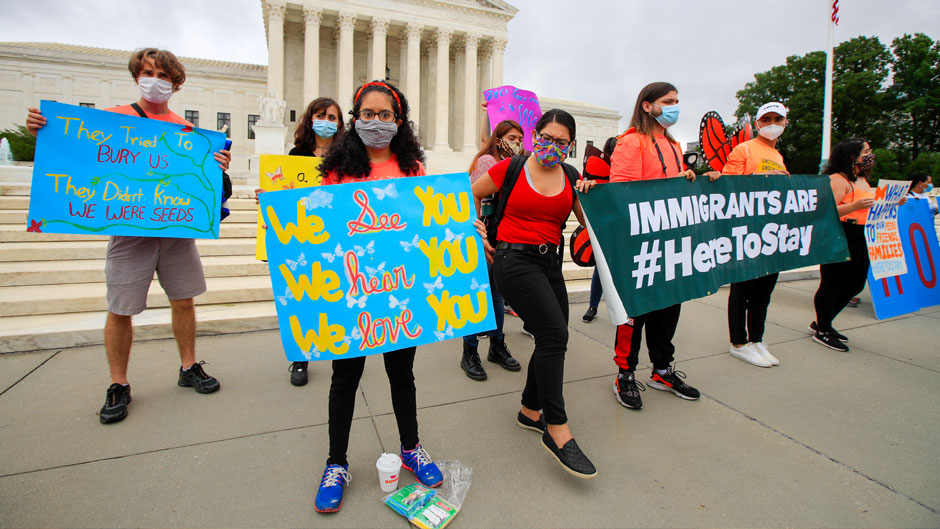The Roberts Court delivered yet another surprise victory to liberals by invalidating the Trump Administration’s rescission of the Obama-era Deferred Action to Childhood Arrivals (DACA). Commentators have stated that the decision allowed Dreamers to breathe a “sigh of relief” by forestalling the administration’s efforts to overturn one of the Obama Administration’s signature domestic accomplishments.
But it is not quite a cause for celebration.
While Chief Justice John Roberts stopped the Trump Administration’s efforts, the act provided a virtual roadmap to ultimately end DACA by laying out the ways that the administration might justify its decision to rescind the nearly-decade-old program to meet the requirements of the Administrative Procedure Act. While the decision might appear to make it harder to overturn the Obama Administration’s unilateral actions on immigration, it underscores the price paid by failing to wrest victories from the legislative process.
When compared to the recent surprise decision that expanded the Civil Rights Act to prohibit employment discrimination against LGBT workers, last Thursday’s DACA decision is a lesson in fragility. The court’s decision on LGBT workers gave the nearly 60-year-old statute new life and new meaning. The decision demonstrates the extent to which legislative enactments can be updated to solve problems not understood as problems at the time of their adoption. Its need also represents the difficulty of actually updating the statute through new legislation or amendment of the existing law, but it is a model of policy stability.
By contrast, the decision is an exceedingly technical one that saves Obama’s most crucial immigration achievement on the basis that the Trump Administration was merely too careless to have bothered with actually explaining its move. The High Court’s standard—arbitrary and capricious—merely sends a policy back to the administration with the note, “Try again.” Its unwillingness to even take the equal protection claim seriously means that there are not likely to be any constitutional constraints on the rescission of the policy by a more competent group of administrators.
By contrast, the Civil Rights Act has withstood affection, benign and malign neglect, hostility, retrenchment, and revivals throughout its life. It is the result of a long trek toward the fundamental reorientation of the American statutory landscape and a reordering of the public contract. Legal scholar William Eskridge has called it a “super-statute”—meaning something less than the Constitution but something more than merely a statute. While this might mean a lot less in an era in which the Voting Rights Act—another so-called super statute—can be invalidated without very much regard to present-day facts or the hard lessons of history, it is also less clear what this means when even these majestic statutes suffered at the hands of bureaucratic actors in administrations that see them as nuisances at best, and threats to liberty and the structures of American government, at worst. However, they represent a different relationship between social movements, political parties, the presidency, and policymaking.
The legislation that constituted the Second Reconstruction is the result of the long transformation of the Democratic Party and the alliances of labor, civil rights, mainstream civic and religious actors, and corporate America. To be sure, the Civil Rights Act’s provisions were trimmed by conservatives within both political parties who sought to undermine its capacity to disrupt the political economy of American segregation. But what resulted has achieved monumental gains during the past 50 years. It is essential to say this, even in the midst of a confrontation with the structures and practices left in place by, or constructed after, the Civil Rights Movement.
The story of the Dreamers is one that has garnered support from vast swathes of the American public in both major political parties. But it has been undermined by an increasingly polarized political process that has refused even to allow votes on significant immigration reforms. These stalemates have increased the pressure on presidents to act unilaterally. Still, we should not kid ourselves into thinking that the result is as sturdy as actually forcing the legislative process to deliver up immigration reform that protects Dreamers and others. Also, immigration in America has “presidentialized” this issue in ways that further the increasing role the president plays in our national politics. And, it forces marginalized communities into a clientelist relationship with modern presidents because they are seen as the saviors of their policy ambitions.
Supporters of protections for Dreamers, and those who oppose them, have taken their cause away from Congress to the halls of the bureaucracy to overcome a hardening of political lines in our most representative institution—even as a significant majority support the policy of not deporting undocumented immigrants who came to the U.S. as children. Last Thursday’s decision ought to send the message that victories harvested by appeals to the president’s capacity for unilateral action are, and remain, fragile. Dreamers deserve better than that. And America deserves a politics capable of responding to the pressing issues of our time in ways that exploit the best of our collective decision-making institutions.
Charlton Copeland is professor of law and Dean’s Distinguished Scholar and teaches administrative law at the University of Miami School of Law.

